21 Surprising Things You Might Not Know About Head Lice
Morgan Copeland 4-15-09
1. Until a few years ago, approaches to head lice were based on old wives tales, misconceptions and marketing departments for the companies who made products for profit from Head Lice Hysteria. Luckily, we now have research upon which to base our practice.
2. Head lice are not a sign of uncleanliness; they love clean hair because it is easier to latch on.
3. Lice do not hop, jump or fly; the only way they can get from one person to another is direct touching, head-to-head.
4. Lice are not passed on pets. The only place head lice can survive and thrive is on the human head.
5. When found, most cases of head lice are already more than a month old. One sign is a red itchy rash on the lack of the neck, just below the hair line.
6. Because of use and overuse of head lice shampoos, head lice have become resistant to the products that once would kill them, so no head lice product is 100% effective, even if you follow the directions to the letter. That is why combing and nit removal is important.
7. Never treat or retreat "just in case" in the absence of live lice. Head lice products are pesticides, which are toxic if overused and can be absorbed through the skin. Follow the directions carefully.
8. Removing the nits (eggs) and live lice with a special metal-tooth comb is time-consuming but the most effective way to get rid of them. They do not wash out.
9. Hats and coats touching in school are not sources of lice and there is no need to separate or bag them. A louse on a hat or coat is a dying louse who will not be capable of reproducing. Healthy ones stay close to the scalp until they sense another human head. They cannot survive without blood, that is why they bite.
10. Head lice are not a source of infection or disease; they are simply a nuisance.
11. Schools are not the most common places where head lice are spread, even though schools have been blamed in the past. Sleepovers among friends and relatives are thought to be a common way they are passed home to home.
12.The most effective screening occurs when parents check their own children at home, treat if any are found, and make efforts to remove the nits.
13. One of the biggest challenges in eliminating head lice is parents' discomfort in communicating about the problem with other parents when they find head lice, so they are more easily passed back and forth among close friends and relatives.
14. "No-nit" policies, ie. not allowing children back into school with nits even though treated, is no longer practiced in most schools because it has been proven that these policies do not impact the spread of lice.
15. You will always be able to find web sites that promote drastic measures like sprays, special products and "no-nit" policies. Pay attention to who they are! Many of these web sites are either not basd on up-to-date research or are commercial sites are in the business of selling a product, and it is in their interests to keep Headlice Hysteria alive, otherwise there go their profits.
16. Nit and lice removal is tedious but there are some simple products that may help. Vinegar, real mayonnaise, olive oil and Dawn Dish soap all have their fans, even though none of these have been proven. The way they seem to help is to loosen the "cement" that the nits use to attach to the hair shaft.
17. Shaving the head or cutting the hair will not affect how easily a child catches lice, though these make nit removal easier. Don't do this unless your child wants you to. A child's self-esteem is much more important than a few missed nits.
18. Grandma's old remedy of kerosene for head lice does not work and is dangerous! Children have died from inhaling the vapors, or from being burned because it is highly flammable. Never use kerosene!
19. Most schools want children with head lice treated and back in school right away.
20. School nurses are supportive advocates who will help you obtain lice shampoo and use it properly. School nurses will assist you in checking or rechecking as you work to remove nits and lice from your child's head. Just ask.
21. School nurses will not judge you or report you or tell others if you ask for assistance dealing with head lice. We handle lice in a confidential manner. We know that even the best families can catch them, and most of us who are parents have been through it at least once ourselves.
http://snp.homestead.com/lice21.html
Chicken Pox Vaccine Boosters Morgan Copeland 3-26-09
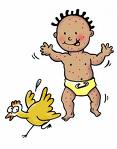
Currently, children receive chicken pox vaccine at age 12 to 15 months. But up to 20% of kids who get a single dose are still susceptible to chicken pox. When they do get chicken pox after an immunization, it is usually a mild case. But even children with mild cases can transmit the disease to others – and they may develop complications. By giving a second dose, immunity is boosted from 80% to 99%. CDC’s recommendations are for a second dose of the vaccine at age 4-6 years (so it will be on the same schedule as MMR). Older children and adults who never received the 6-year old, second immunization of Varicella, are also eligible to receive it at a later age.
http://www.schoolnurse.com/med_info/ChickenPoxBoosters.html
Salmonella Typhimurium By: Morgan Copeland 2-12-09
The U.S. Food and Drug Administration, the U.S. Centers for Disease Control and Prevention and other federal, state and local public health agencies continue to investigate a multistate outbreak of salmonellosis caused by a strain of Salmonella serotype Typhimurium. There have been 683 cases of the bacterial illness reported from 46 states since early September, including 10 from Texas. The 10 Texas cases are from Galveston, Harris (3), Lubbock, Tarrant (3), Travis and Willacy counties and occurred in October, November, December, January and early February.
Physical Education: Morgan Copeland 2-5-09
Studies: Recess Essential to Children's Attention in Class
Recess may be as important to children's learning as core academic subjects, according to several new studies. Students who had daily recess, outdoor activities or other play opportunities were better behaved than their counterparts and more able to concentrate -- even if they have ADHD -- than their peers. A study published this month in the journal Pediatrics studied the links between recess and classroom behavior among about 11,000 children age 8 and 9. Those who had more than 15 minutes of recess a day showed better behavior in class than those who had little or none. Read more of this New York Times article at www.nytimes.com/2009/02/24/health/24well.html?_r=1. Read the journal article in Pediatrics at http://pediatrics.aappublications.org/cgi/content/abstract/123/2/431.
www.dshs.state.tx.us/schoolhealth
PREVENTING DISEASES By: Morgan Copeland 2-20-09
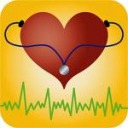
Hand washing is the single most important behavior in preventing infectious disease. Hands must be clean before you can touch your eyes, mouth, nose or any cuts or scrapes on the skin. Wash your hands or use an alcohol-based hand sanitizer frequently. Do not share towels, soap, or other personal care items. Shower with soap and water as soon as possible after direct contact and dry using a clean, dry towel. Ointments or antibiotics must not be shared. Pre-wash or rinse items that have been grossly contaminated with body fluids. Wash towels, uniforms, and any other laundry in hot water and ordinary detergent and dry on the hottest cycle. If you follow all of these steps then you will be less likely to get an infectious disease.
Health Services: by: Morgan Copeland 2-13-09
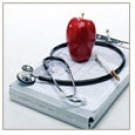
Nitric Oxide Monitoring Does Not Help Most Children with Asthma
The level of nitric oxide (NO) in an asthmatic’s exhaled breath can portend worsening asthma symptoms, and may even signify an imminent attack linked to underlying airway inflammation. This has made the monitoring of NO levels, particularly in children, of significant interest as a potential way to help clinicians fine-tune medications and improve treatment outcomes. However, a recent multi-center prospective study found that calibrating medications based daily monitoring of the fractional exhaled nitric oxide and symptoms in asthmatic children showed no significant improvement over medicating based on daily symptom monitoring alone. Read more at http://vonpirquet.blogspot.com/2009/01/nitric-oxide-monitoring-does-not-helo.html.
Don’t Put Other People at Risk by: Morgan Copeland 2-6-09
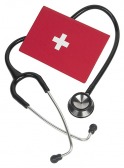
With flu season arriving, the chances of you getting sick are increasing. With the contagious germs floating in the halls of our school more and more people are at risk. Even though the exemption policy claims that you can have close to no absences in order to get out of taking your semester finals, and everyone is trying their hardest to exempt all exams, it is not a good idea to come to school while you are ill. If you are feeling under the weather, take a day off and rejuvenate yourself before you expose yourself to your friends at school. This way, you will get better faster, and the people you come in close contact with are at a lesser risk.
National Highway Traffic Safety by: Ferrell Mason
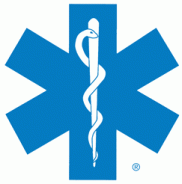
The National Highway Traffic Safety Administration has published the report, “Lives Saved in 2007 by Restraint Use and Minimum Age Drinking Laws.” According to the report, 21-year-old minimum age drinking age laws have prevented an estimated 4,442 drunken driving deaths in the last five years alone. The data provided in the report has been produced by NHTSA’s National Center for Statistics and Analysis since 1975. To access this report visit www.nhtsa.gov/staticifiles/DOT/NHTSA/NCSA/Content/RNotes/2008/811049r.pdf.
Safe and Healthy School Environment:Morgan Copeland 1-30-09

Do seatbelts make school buses safer?
Many buses in Dallas public schools and eight additional districts will soon feature shoulder-lap seat belts despite mixed research in their effectiveness. “Common sense says we need to protect our kids every way possible, and that includes seatbelts,” said Larry Duncan, Dallas Count school board president. Read more at http://www.dallasnews.com/sharedcontent/dws/dn/latestnews/stories/010209dnmetbusbelts.39bee69.html.
Parent and Community Involvement: Morgan Copeland 1-23-09
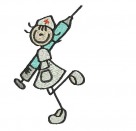
National Center on Addiction and Substance Abuse Report Identifies Four Characteristics of “Problem Parents”
“Although virtually all mothers and fathers are concerned about the challenges of raising their kids in today’s world, many fail to take essential actions to prevent their kids from smoking, drinking, or using drugs,” according to a report from the National Center on Addiction and Substance Abuse at Columbia University (CASA). Using data from a telephone survey of teens and parents, CASA defines “problem parents” as those who fail to 1) monitor their children’s school night activities; 2) safeguard prescription drugs in the home; 3) address the problem of drugs in schools; and 4) set a good example. Access the entire report online at www.casacolumbia.org/articlefiles/380-2008%20Teen%20Survey%20Report.pdf.
Physical Education:
1-15-09
Small-Screen Recreation' May Make for Less Fit Youth
Kids -- especially girls -- who spend more time doing activities such as e-mailing, texting, watching TV, and playing video games tend to be less fit, researchers reported. Girls who spent more time in "small-screen recreation" could run fewer laps than girls who spent less time in such sedentary activity, Louise L. Hardy, Ph.D., of the University of Sydney, and colleagues reported in the February issue of the American Journal of Preventive Medicine. "The longer girls spend on small-screen recreation, the less fit they were," Dr. Hardy said. Read more at www.medpagetoday.com/Pediatrics/GeneralPediactrics/12346
Nutrition Services:
1-15-09
Researcher calls free breakfast educational "magic bullet"
Nearly 18 million low-income U.S. children receive free or reduced-price lunches, but less than half of those opt in to similar breakfast programs, according to a recent study from Harvard University researchers. While researchers say school breakfasts may improve attendance, test scores, grades, behavior and health, many parents remain unaware of the option or have a difficult time getting children to school in time to eat before classes begin. Read more at www.boston.com/news/local/massachusetts/articles/2009/01/04/on_the_table.
Physical Education:
101 Tips for Beginning Teachers of Physical Education
The National Association for Sport and Physical Education (NASPE) and the United States Tennis Association welcome new physical education teachers to the profession with a specially created brochure just for them. From ways to get ready before the school year begins to best practices and classroom management, there are 101 tips to help physical education teachers make a smooth transition from student to teacher. For a complimentary copy, send a stamped, self-addressed business envelope to 101 Tips for Beginning Teachers NASPE 1900 Association Drive, Reston, VA 20191. To order copies at a minimal cost, call 1-800-321-0789, stock number 10466.
NASPE’s November Teacher Toolbox Posted
A new Web page for “Integrating Physical Activity into the School Day” for classroom teachers and physical educators is among the newest resources from NASPE in the November Teacher Toolbox. To access the Toolbox, go to www.aahperd.org/naspe/templat.cfm?template=teacher_toolbox_nov08.html
Quote to Note:
“Learn from the turtle, it only makes progress when it sticks out its neck.”
-Author Unknown
Health Education:
Survey Shows that Alcohol and Tobacco Have Greatest Rates of Initiation; Number of First Time Misusers of Pain Relievers Surpass that of Marijuana
More people used alcohol, cigars and cigarettes for the first time in the past year than any other substances, according to data from the 2007 National Survey on Drug Use and Health. More than 4.5 million U.S. household residents ages 12 or older reported that they used alcohol for the first time in the past year and more than 3 million and 2.2 million reported initiating in cigar and cigarette use, respectively. While the number of new misusers of pain relievers has been decreasing since 2003, pain relievers continues to be the illicit drug category with the largest number of new initiates since surpassing marijuana in 2002. Read the Substance Abuse and Mental Health Services Administration article; Results from the 2007 National Household Survey on Drug Use and Health: National Findings, 2008, available online at www.oas.samhsa.gov/nsduhLatest.html.
The CarMax Foundation – Regional Giving Program The CarMax Foundation’s Regional Giving Program awards grants to organizations that promote either educational opportunities for children and families or youth leadership and show a demonstrable need based upon the demand for the program or population served by the program. Access more information at www.healthinschools.org/News-Room/Grant Alerts/Regional-Giving-Program.aspx (Deadlines vary based on location.)
Stop Bullying Now!
9/2008--Morgan Copeland
I recently read an article on stopbullying.com about the signs and harmful effects of being bullied. Some common signs that you are being bullied are punching, shoving, and other acts that hurt people physically, spreading bad rumors about people, keeping certain people out of a “group”, teasing people in a mean way and getting certain people to gang up on others. Bullying can also happen online or electronically. Some harmful effects of bullying are that it can mess up a kid’s future, it scares people so much that they skip school, and it can lead to huge problems later in life. If you are being bullied or witnessing someone being bullied it must be stopped by telling an adult. Even though telling an adult may seem hard it is the right thing to do.
MRSA Virus (Staph)
Infections Caused by MRSA
• In the community most MRSA infections are skin infections that may appear as boils which often are red, swollen, painful, or have pus or other drainage. These skin infections commonly occur at sites of visible skin trauma, such as cuts and abrasions, and areas of the body covered by hair.
• Almost all MRSA skin infections can be effectively treated by drainage of pus with or without antibiotics..
Transmission of MRSA
• MRSA is usually transmitted by direct skin-to-skin contact or contact with shared items or surfaces that have come into contact with someone else's infection.
Settings where MRSA occurs
• MRSA skin infections can occur anywhere.
• Some settings have factors that make it easier for MRSA to be transmitted.
• These factors, referred to as the 5 C's, are as follows: Crowding, frequent skin-to-skin Contact, Compromised skin (i.e., cuts or abrasions), Contaminated items and surfaces, and lack of Cleanliness.
• Locations where the 5 C's are common include schools, dormitories, military barracks, households, correctional facilities, and daycare centers.
Protecting Yourself from MRSA
• You can protect yourself by:
• practicing good hygiene;
• covering skin trauma such as abrasions or cuts with a clean dry bandage until healed;
• avoiding sharing personal items that come into contact with your bare skin; and using a barrier between your skin and shared equipment such as weight-training benches;
• maintaining a clean environment by establishing cleaning procedures for frequently touched surfaces and surfaces that come into direct contact with people's skin.
Should the school be closed to be cleaned or disinfected when an MRSA infection occurs?
• Covering infections will greatly reduce the risks of surfaces becoming contaminated with MRSA. In general it is not necessary to close schools to "disinfect" them when MRSA infections occur. MRSA skin infections are transmitted primarily by skin-to-skin contact and contact with surfaces that have come into contact with someone else's infection.
• When MRSA skin infections occur, cleaning and disinfection should be performed on surfaces that are likely to contact uncovered or poorly covered infections.
• Cleaning surfaces with detergent-based cleaners or Environmental Protection Agency (EPA)-registered disinfectants is effective at removing MRSA from the environment.
• It is important to read the instruction labels on all cleaners to make sure they are used safely and appropriately.
• Environmental cleaners and disinfectants should not be used to treat infections
Should the entire school community be notified of every MRSA infection?
• Usually, it should not be necessary to inform the entire school community about a single MRSA infection. When an MRSA infection occurs within the school population, the school nurse and school physician should determine, based on their medical judgment, whether some or all students, parents and staff should be notified. Consultation with the local public health authorities should be used to guide this decision.
• Remember that staphylococcus (staph) bacteria, including MRSA, have been and remain a common cause of skin infections.
Should students with MRSA skin infections be excluded from attending school?
• Unless directed by a physician, students with MRSA infections should not be excluded from attending school.
• Exclusion from school and sports activities should be reserved for those with wound drainage ("pus") that cannot be covered and contained with a clean, dry bandage and for those who cannot maintain good personal hygiene.
I have an MRSA skin infection. How do I prevent spreading it to others?
• Cover your wound. Keep wounds that are draining or have pus covered with clean, dry bandages until healed. Follow your healthcare provider's instructions on proper care of the wound. Pus from infected wounds can contain staph, including MRSA, so keeping the infection covered will help prevent the spread to others. Bandages and tape can be discarded with the regular trash.
• Clean your hands frequently. You, your family, and others in close contact should wash their hands frequently with soap and water or use an alcohol-based hand sanitizer, especially after changing the bandage or touching the infected wound.
• Do not share personal items. Avoid sharing personal items, such as towels, washcloths, razors, clothing, or uniforms, that may have had contact with the infected wound or bandage. Wash sheets, towels, and clothes that become soiled with water and laundry detergent. Use a dryer to dry clothes completely.

